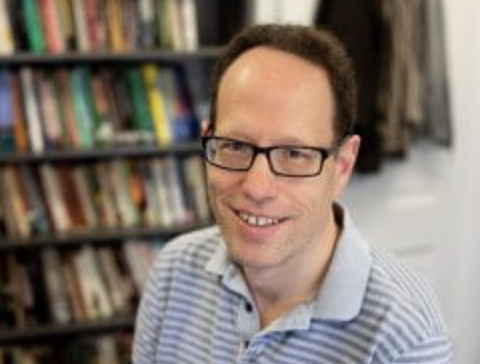Discriminating Mind
 Lincoln Quillian was not surprised at the findings. Saddened, maybe. But not surprised.
Lincoln Quillian was not surprised at the findings. Saddened, maybe. But not surprised.
Quillian, a professor of sociology and chair of the Institute of Policy Research’s Program on Urban Policy and Community Development, had pulled together two dozen studies examining discrimination between black and white job candidates. Many of the studies included field experiments where investigators sent out actors of different ethnicities to apply for the same job, complete with similar fake resumes.
After examining them, Quillian and longtime collaborator and Harvard sociologist Devah Pager found no change in rates of discrimination between 1990 and 2015. “There were other things that maybe suggested more optimism,” says Quillian. “Answers to survey questions that asked about traditional measures of prejudice had shown some signs of decline. But the lack of change was clear in the data.”
What did surprise Quillian, however, was how much he enjoyed this meta-analytical approach to examining results from various studies and then combining them. And it’s opened a new avenue of research for Quillian, an IPR fellow who is considered a leading scholar on racial inequality and social stratification.
“It's not something where you have this complicated statistical model,” he says. “Here, you get this nice form of relative transparency.”
It’s a departure from Quillian’s typical work. He’s known more for his statistical rigor as a social demographer, most notably in his 2012 paper “Segregation and Poverty Concentration: The Role of Three Segregations,” in which he won the American Sociological Association’s Jane Addams Award in 2014. There, Quillian revised sociologists Douglas Massey and Nancy Denton’s argument in American Apartheid (Harvard University Press, 1998) that racial segregation, race-based gaps in poverty and segregation based on poverty within race has created a pernicious, concentrated levels of poverty within black and Latino communities.
Instead, Quillian examined Massey and Denton’s data and argued that a third segregation hadn’t been accounted for: the segregation of high- and medium-income members of other groups from blacks and Latinos.
“It didn't model that black families or non-white families that live in white neighborhoods tend to be more affluent than the non-white neighbors that live in less-white neighborhoods. And likewise, white people that live in more heavily minority communities may have lower income than white people that live elsewhere,” Quillian says. “It didn’t completely change Massey's simulation, but it added some complexities to it.”
That attention is key when trying to understand what Quillian calls “an important social problem,” an interest he’s held since his undergraduate days at the University of Chicago. Living in Hyde Park, Quillian saw a racial dynamic that was unfamiliar to him despite growing up near “Little Saigon,” a large Vietnamese community that stretches across three cities in Orange County, California.
“There was a stark, racial inequality that was in your face,” he says. “Then there was the White-Asian thing that I grew up with where there was racial diversity, but it was different. That caught my attention.”
At Chicago, Quillian studied while surrounded by faculty such as Massey and famed sociologist William Julius Wilson. There, he started writing about migration and segregation. His dissertation tracked migration patterns and the development of poverty in US neighborhoods.
Quillian then headed to the University of Wisconsin-Madison, where he spent eight years before coming to Northwestern in 2005. While he was in Madison, Quillian advised a young doctoral student named Devah Pager whose work also focused on racial stratification. She proposed putting together an audit study where she would hire actors, give them resumes that included a criminal record, and see if they got callbacks on job interviews.
“So many people were coming out of prison because of mass incarceration and it was an important subgroup to look into,” Quillian recalls. “It was a really bold idea. Yeah, her dissertation ended up being quite famous.”
So began a decades-long partnership with Pager where the two collaborated on several papers, including the 2017 meta-analysis piece on hiring discrimination. Each brought something unique to the union, Quillian says. Devah’s clear thinking and “people skills” complemented Quillian’s statistical prowess. However, the relationship ended when Pager passed away of pancreatic cancer in
November 2018. “There’s another paper of ours that I’m still trying to get published,” Quillian says.
Since then, Quillian has expanded on his new approach. Currently, he’s compiling a database of similar studies from around the world, particularly in Europe. “Lincoln is very generous,” says Arnfinn Haagensen Midtbøen, a senior research fellow at The Institute for Social Research in Oslo, Norway, and a co-author on the 2017 paper. “I sometimes find American academics to be overly strategic and not too interested in collaborating with scholars from the Northern corner of Europe. Lincoln, by contrast, made me confident that my contributions were much appreciated.”
With renewed focus, Quillian hopes to continue the work he and Pager started — just on a more global scale — and find more answers to this social dilemma.
“You don't understand the reason why employers do what they do, but you get a very clear measure of discrimination,” Quillian says. “And the simplicity of the experimental design and results is a very appealing thing.”
By Glenn Jeffers